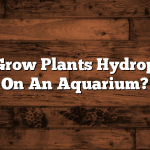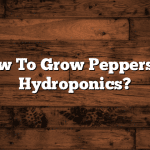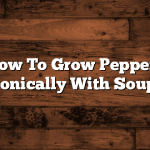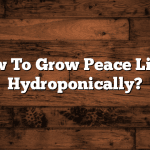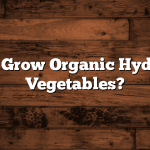Understanding the Basics of Hydroponic Plant Cultivation
Hydroponic plant cultivation is a modern method of growing plants that eliminates the need for traditional soil. Instead, plants are grown in a nutrient-rich solution that is carefully regulated to provide all the necessary elements for growth. This method offers several advantages, including better control over plant nutrition, faster growth rates, and higher yields.
One of the key components of hydroponic plant cultivation is the use of **hydroponic systems**. These systems come in various designs, from simple to complex, and provide a controlled environment for the plants. Some common types of hydroponic systems include the nutrient film technique (NFT), deep water culture (DWC), and aeroponics. Each system has its own advantages and considerations, so it is important to choose the one that best suits your needs and preferences.
Another important aspect of hydroponic plant cultivation is selecting the **growing medium**. Unlike traditional soil, hydroponics utilizes materials such as perlite, vermiculite, coconut coir, or rockwool to provide support for the plants’ roots. The growing medium should have good water retention and aeration properties, as well as be free from pests and diseases. It is crucial to consider the specific requirements of the plants you intend to cultivate and choose a growing medium accordingly.
Providing **adequate lighting** is also crucial in hydroponic plant cultivation. Since plants in hydroponic systems do not have access to natural sunlight, artificial lighting is used to provide the necessary energy for photosynthesis. There are various types of grow lights available, including fluorescent, high-intensity discharge (HID), and light-emitting diode (LED) lights. The choice of lighting depends on factors like the size of the growing area, the type of plants being grown, and the desired growth stage.
Overall, understanding the basics of hydroponic plant cultivation is essential for successful implementation of this innovative and efficient gardening method. By selecting the right hydroponic system, growing medium, and providing adequate lighting, you can create an ideal environment for your plants to thrive. In the next sections of this article, we will delve deeper into each aspect and provide you with valuable insights and tips to get started on your hydroponic journey.
Choosing the Right Hydroponic System for Your Plants
Hydroponics offers an innovative and efficient way to cultivate plants without soil. However, with various hydroponic systems available, it can be a daunting task to choose the right one for your plants. Understanding the different types of hydroponic systems is crucial in order to make an informed decision and maximize the growth potential of your plants.
One commonly used hydroponic system is the Nutrient Film Technique (NFT). In this system, a thin film of nutrient-rich water continuously flows over the roots of the plants, providing them with a constant supply of nutrients. NFT systems are ideal for leafy greens and herbs due to their shallow root systems. On the other hand, Deep Water Culture (DWC) systems are better suited for larger plants with deeper root systems, such as tomatoes and cucumbers. In DWC, the plant roots are submerged in a nutrient solution, allowing for excellent oxygenation and nutrient uptake. Additionally, Aeroponics is another popular system where plants are suspended in air while their exposed roots are misted with nutrients at regular intervals. This system provides unmatched oxygenation to the roots and is especially good for fast-growing plants.
Selecting the Ideal Growing Medium for Hydroponics
In hydroponic plant cultivation, selecting the ideal growing medium plays a crucial role in the success of your plants. Unlike traditional soil-based gardening, hydroponics relies on a growing medium to support the plants and provide them with essential nutrients and water. The growing medium acts as a substitute for soil, creating an environment where the roots can easily access the necessary elements for growth. With a wide range of options available, it is important to choose a growing medium based on the specific needs of your plants.
One popular choice for hydroponics is **coconut coir**, a natural fiber obtained from coconut husks. Coconut coir is an excellent growing medium due to its ability to retain moisture, while also providing good aeration for the roots. Moreover, coconut coir is pH-neutral, meaning it won’t significantly affect the pH balance of your nutrient solution. This makes it suitable for a variety of plants, whether you’re growing leafy greens or flowering crops.
Another option worth considering is **expanded clay pebbles**. These lightweight pebbles are made by heating clay at high temperatures to create porous pellets. Expanded clay pebbles excel at draining excess water and allowing for ample oxygenation of the roots. They also provide stability for the plants, preventing them from toppling over. Keep in mind that expanded clay pebbles may require pre-soaking before use to remove any dust or debris.
When selecting a growing medium for hydroponics, it is crucial to consider factors such as moisture retention, aeration, pH balance, and stability. By choosing the right medium for your plants, you provide them with an optimal environment for growth and maximize their chances of thriving in a hydroponic system.
Providing Adequate Lighting for Hydroponic Plants
When it comes to hydroponic plant cultivation, providing adequate lighting is crucial for the overall success of your plants. Unlike traditional outdoor gardening, hydroponic systems rely heavily on artificial light sources to ensure that plants receive the right amount and quality of light for optimal growth and development.
One key factor to consider when selecting lighting for your hydroponic setup is the light intensity. Different plants have different light intensity requirements at various stages of their growth cycle. For instance, leafy greens typically require lower light levels compared to fruiting plants. It is important to research and understand the specific light requirements of the plants you are growing in order to choose the right lighting system.
In addition to intensity, the light spectrum is also important in providing the necessary wavelengths of light for photosynthesis. Plants primarily absorb red and blue light, so it is essential to select a lighting system that offers a balanced spectrum of these colors. Full spectrum LED grow lights are a popular choice among hydroponic gardeners as they can provide the ideal combination of red and blue wavelengths. Additionally, LED lights are energy-efficient and have a longer lifespan compared to traditional high-pressure sodium (HPS) or fluorescent lights.
Overall, providing adequate lighting for your hydroponic plants involves considering the light intensity and spectrum needed for their specific growth requirements. With the right lighting system, you can ensure healthy and vibrant plants that will thrive in your hydroponic setup.

